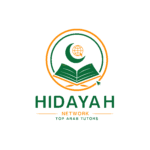How to Teach Quran to 3 Year Olds

- Hidayah
- Network
- | Role: Hidayah Network

Teaching the Quran to a 3-year-old can be fun and exciting. It becomes an enriching experience for parents if they opt for a few creative ways. Introduce the basic Arabic alphabet using Noorani Qaida, a simplified method for young learners. Develop a systematic, fun, and easy structure. Integrate sign language to aid memorization. Fixing the start and end of the day with basic recitation.
In addition, incorporating basic duas for daily activities helps build a foundation of Islamic practices. Let’s discover how, as parents, you can seamlessly integrate Quranic teachings into your child’s early years.
Table of Contents
Toggle10 Easy and Creative Ways to Teach the Quran to 3-Year-Olds
We will share some of the tried and tested tips to teach the Quran to 3-year-old kids, making the teaching and learning experience ever so fun.
1. Introduce the Basic Arabic Alphabet Using Noorani Qaida
Begin by laying a strong foundation with the Noorani Qaida, a beginner-friendly tool to introduce the Arabic alphabet to young learners. Utilizing vibrant visuals and simple pronunciation guides, Noorani Qaida makes the process enjoyable for 3-year-olds.
Incorporate storytelling techniques to introduce each letter. To reinforce the learning, engage in interactive activities like drawing and coloring associated with specific letters. For example, relate “Alif” to the shape of a tree. This visual association sparks curiosity and makes the learning experience educational and entertaining. Quran classes for kids are best for children to teach them all the basics of quranic Arabic.
2. Develop a Systematic, Fun, and Easy Structure
Create a structured routine seamlessly integrating Quranic teachings into your child’s day. Start by designating a specific time for Quranic sessions, making it a consistent and expected part of their daily activities. Break down lessons into short, engaging segments, ensuring they align with the attention span of a 3-year-old.
Introduce playful elements like games, songs, and interactive exercises to make the learning experience enjoyable. Incorporate themes and colors to create a visually stimulating environment, associating positive feelings with Quranic education.
3. Integrate Sign Language to Help Them Memorize
Enhance your child’s memorization skills by incorporating sign language into Quranic lessons. Associate specific signs with key verses or phrases, providing a visual and tactile element to aid memory retention.
For instance, use a gentle hand motion for the word “Allah.” This multisensory approach appeals to diverse learning styles and facilitates a deeper understanding of the content. Research indicates that combining visual and kinesthetic cues significantly improves memory recall.
4. Fix the Start and End of the Day with Basic Recitation
Establish a meaningful routine by incorporating Quranic recitation at the beginning and end of each day.
- Begin with short verses or chapters, creating a soothing atmosphere conducive to learning.
- Use age-appropriate translations and explanations to ensure comprehension.
- Introduce the concept of gratitude by incorporating verses that express thankfulness.
For instance, the Quranic verse “Alhamdulillah” emphasizes gratitude. By making recitation a consistent part of their daily routine, you instill a sense of spiritual connection and routine, creating a strong foundation for their ongoing Quranic education.
5. Make Them Learn Basic Duas for Basic Activities
Infuse daily activities with learning basic duas, connecting Quranic teachings to practical moments. Start with simple duas for eating, sleeping, and entering or leaving the house. Create a visual aid by placing illustrated duas in relevant spaces, such as the dining area or bedroom.
Associate each dua with the corresponding activity to reinforce the connection. For example, associate the dua for eating with mealtime.
Pro Tip: Consider turning dua learning into a game to enhance your child’s engagement. Create a fun, interactive ritual by encouraging them to repeat the duas during daily activities.
6. Introduce Memorization Themes That Resonate with Them
Make Quranic memorization more relatable for your 3-year-old by introducing themes that capture their imagination. Select verses or chapters that align with their interests or experiences, making the content more meaningful.
For example, connect the concept of kindness with verses highlighting compassion. This thematic approach creates a context that resonates with them, making memorization more enjoyable and relevant.
As the Prophet Muhammad (peace be upon him) said, “The example of a believer who recites the Quran is like that of a citron, which tastes good and smells good.”
7. Engage in Hands-on Activities Like Tracing Arabic Letters
Enhance your child’s familiarity with the Arabic alphabet by incorporating hands-on activities such as tracing. Use textured materials like sandpaper or playdough to create a tactile experience, aiding in letter recognition and motor skill development.
Follow these steps for effective engagement:
- Provide large-sized Arabic letter templates.
- Use tracing paper or textured surfaces.
- Please encourage your child to trace the letters using their fingers.
This kinesthetic approach reinforces letter recognition and makes the learning process enjoyable and interactive. In Noornai qaida classes for kids 3 years old children can practice all tracing Arabic letters.
8. Incorporate Hymns and Quran-Related Nasheeds
Amplify the learning experience by incorporating hymns and Quran-related nasheeds into your teaching routine. Music has a powerful impact on memory retention, and incorporating melodies with Quranic themes can enhance your child’s connection to the verses.
Choose nasheeds with simple tunes and meaningful lyrics, creating a harmonious atmosphere during learning sessions. This auditory stimulation provides an additional layer of engagement and aids in retaining Quranic content.
9. Use Visual Aids and Illustrations to Teach Specific Ayahs
Facilitate understanding by employing visual aids and illustrations when teaching specific ayahs. Create simple drawings or use pictures that represent the meaning of the verses.
Pro Tip: Encourage your child to create illustrations for the verses. This enhances their creativity and reinforces their understanding of the Quranic concepts through a personalized touch.
10. Use Quran Coloring and Drawing Books
Introduce the world of Quranic learning through coloring and drawing books specifically designed for young children. Incorporate the following elements for an effective experience:
- Select coloring books with large, clear images of Quranic scenes.
- Use coloring materials suitable for their age, such as large crayons.
- Discuss the scenes in the coloring book, connecting them to Quranic stories.
Conclusion
When nurturing the seeds of Quranic wisdom within your 3-year-old, remember creativity is the key to their eager minds. From tracing Arabic letters with playful textures to singing Quranic nasheeds that resonate, every moment becomes a canvas for spiritual growth. Embrace the joy of shared hymns, colorful drawings, and thematic memorization.

About Author
